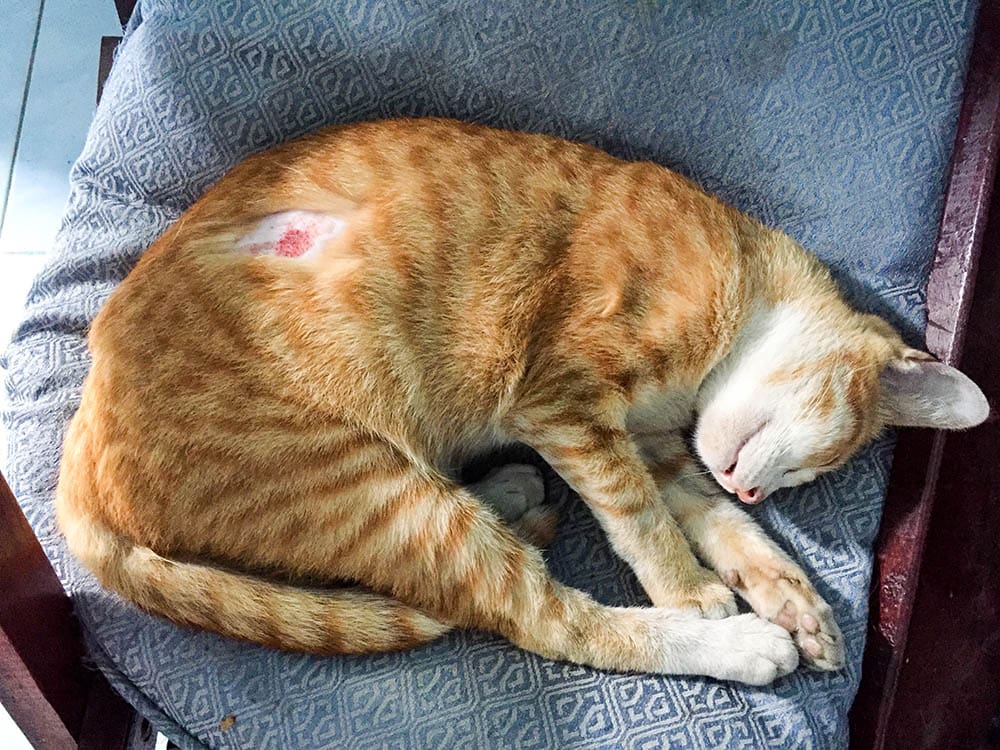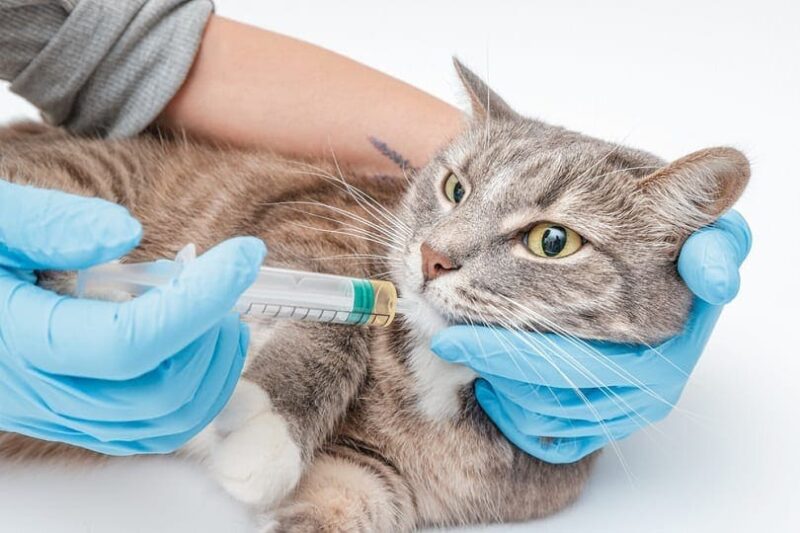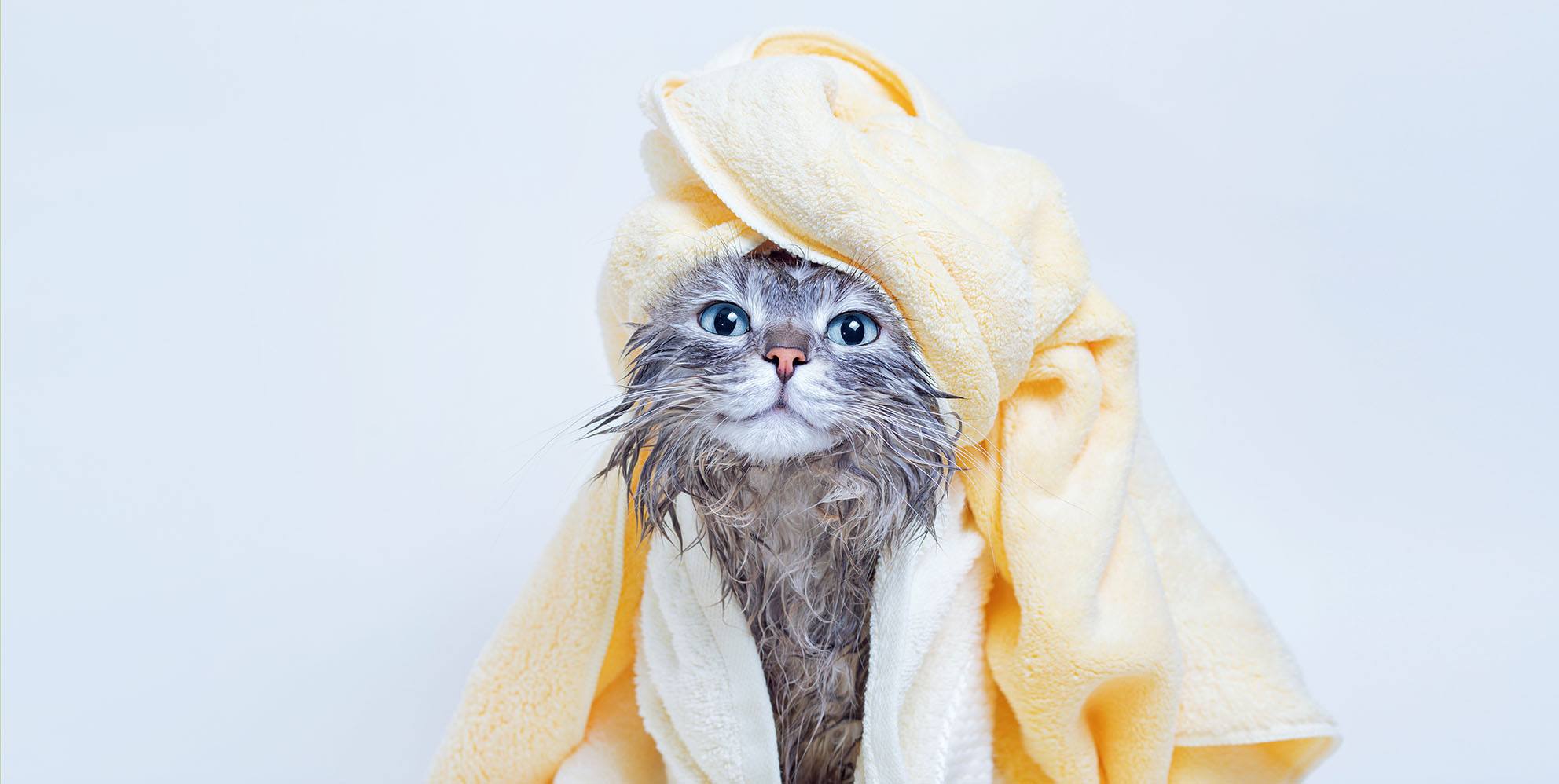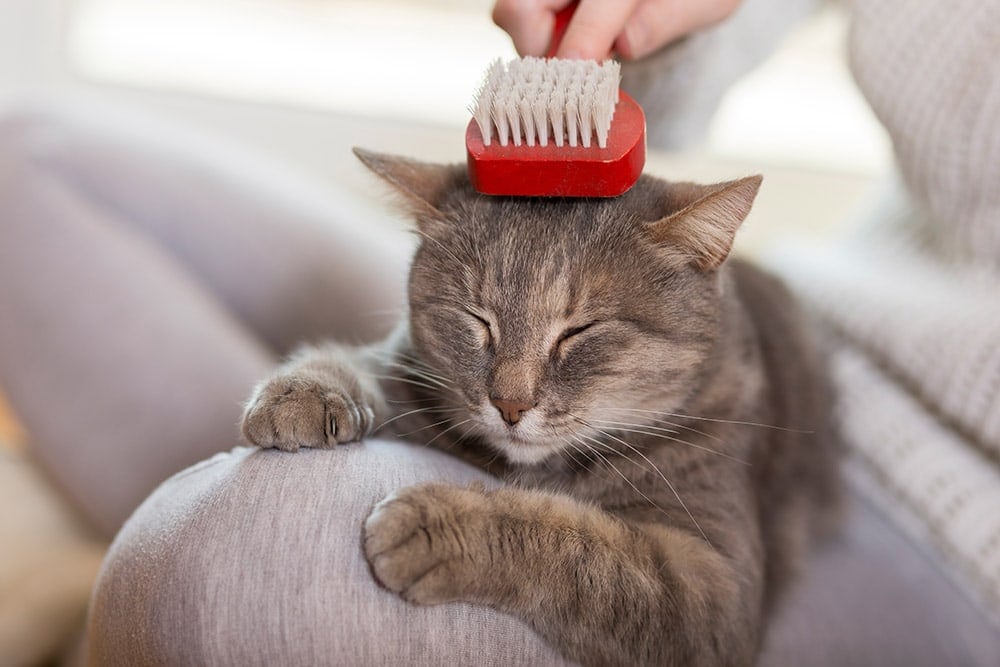VET APPROVED

The information is current and up-to-date in accordance with the latest veterinarian research.
Learn more »Scratching is a normal part of your cat’s life, but excessive scratching can lead to hot spots. These are painful skin lesions that are warm to the touch, hence their name. They can have various causes, so it’s important to visit your vet as soon as you notice a skin lesion on your cat to avoid further pain and problems.
Keep reading to learn more about hot spots on cats and what you can do to prevent and treat the issue.

What Are Hot Spots?
A hot spot, formally called acute moist dermatitis or pyotraumatic dermatitis, is a skin infection that occurs on damaged skin surfaces, which is normally caused by your pet’s scratching, licking, or chewing behaviors.1 Although they are more commonly seen on dogs, cats can develop them too.
What starts the hot spots is skin trauma and inflammation due to your cat’s excessive scratching or licking. Your pet’s mouth and skin are surrounded by bacteria. With excessive moisture and heat, these bacteria (alongside yeast) overgrow, and infection can set into the affected area. This is especially true if scratching and chewing create tears in the skin.
Hot spots are relatively easy to diagnose. The hot spot will first be itchy, moist, and red-looking. After infection sets in, pus may ooze out and eventually dry around the wound. If left untreated, your cat’s fur can fall out as a result. The hot spots feel warm to the touch and are incredibly painful.
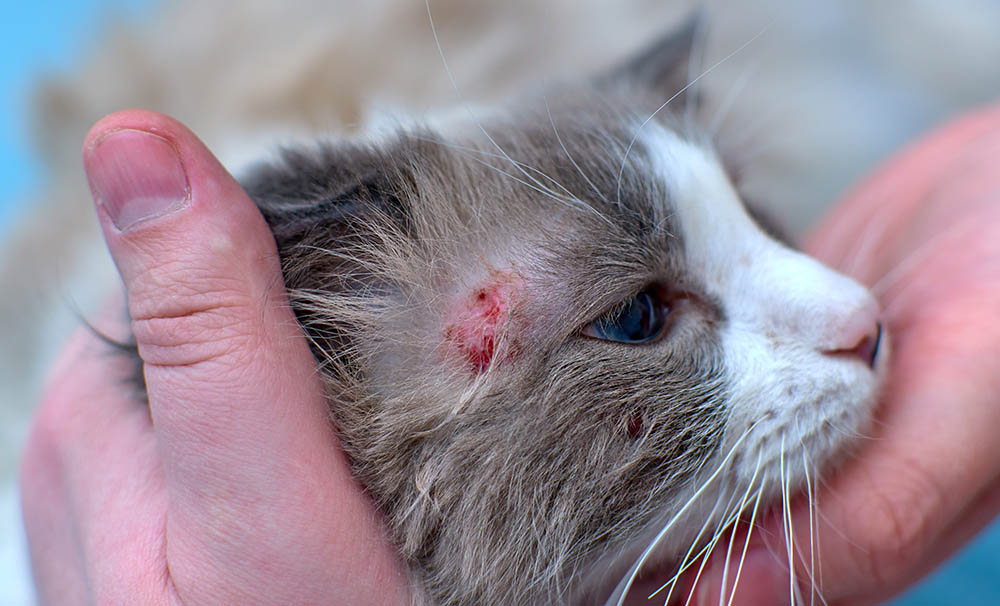

The 3 Stages of Acute Moist Dermatitis
It may be helpful to think of hot spots in stages. Although these are not formal, they can help you determine how serious your cat’s hot spots are while waiting for the vet appointment.
1. First Stage: Red, Inflamed, and Moist
The first stage is whenever the hot spot is red and inflamed. It may be difficult to distinguish regular skin irritation from acute moist dermatitis at this point. The main difference is that the wound will be slightly moister than regular skin irritation. It’s important to take your cat to the vet at this stage so the lesion doesn’t progress.
2. Second Stage: Red, Inflamed, and Moist with Oozing Pus
During the second stage, the hot spot will continue to be moist, red, and inflamed, but the infection will cause ooze to come out. Most people notice acute moist dermatitis at this stage because the pus is impossible to ignore.
3. Third Stage: Red, Inflamed, and Moist with Oozing Pus and Dry Pus
The final stage of hot spots is that the pus will be there long enough that it hardens around the wound. As a result, you will see oozing pus and flaky pus since the infection has not been addressed and the old pus has had the chance to dry out.

Causes of Hot Spots in Cats
Hot spots are most directly caused by excessive licking, chewing, or scratching. Several underlying issues can cause your cat to irritate the skin repeatedly, causing a hot spot.
- Fleas
- Skin mites
- Ear or skin infections
- Environmental allergies
- Food allergies
- Insect bites
- Joint pain
- Matted fur
- Boredom
- Stress or anxiety
It’s critical to pinpoint the underlying cause of the hot spot so you can prevent further hot spots from occurring for the same reason. The location of the hot spots may help you determine the underlying cause of the issue.
How to Treat Hot Spots on Cats
If you suspect that your cat has hot spots, take your pet for an examination at the veterinarian. Even though you may think you can treat your cat’s hot spots on your own, taking your furry friend to the vet is the best way to ensure that the issue is being treated appropriately and most importantly, that the underlying problem is detected and addressed.
Your veterinarian will clip the hair around the infected area. This will ensure that the skin can be thoroughly cleaned and any trapped moisture and pus removed.
To treat the hot spot directly, your vet will likely prescribe anti-inflammatories and antibiotics. These can be given as an ointment, by mouth, by injection, or a combination of all these. Together, this treatment plan will kill off the bacteria and yeast while reducing any itchiness, pain, and swelling of the hot spot. Depending on the location, your vet may prescribe an e-collar or cone to further prevent itching.
In addition to treating the hot spot, your vet will want to address the underlying cause of the itching, the treatment for which will vary. For example, if fleas are responsible for the hot spot, your vet will prescribe flea medication.
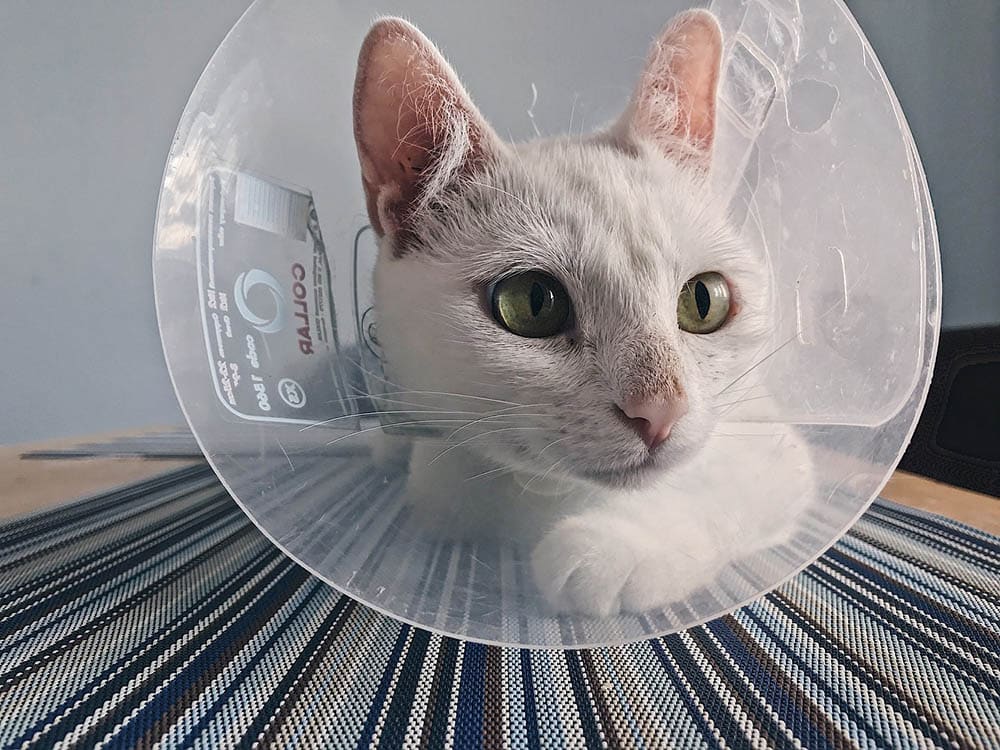

The 3 Prevention Tips
Unfortunately, hot spots may appear on your cat no matter what you do. Still, there are prevention tips you can implement to help minimize the risk.
1. Proper Medication
The first thing you should do to prevent hot spots from developing on your cat is to provide them with preventative parasite medication, such as flea drops or tablets. This anti-parasite medication is important for all aspects of your cat’s health, but it can help prevent hot spots too.
2. Proper Grooming
If your cat’s fur gets matted or excessively long, the chances of your cat developing a hot spot increase. Make sure to groom your cat’s fur properly. This step is especially important during the summer months when humidity is at an all-time high.
3. Avoiding Allergens
If you know that your cat has certain allergens, try your best to avoid these. For starters, don’t feed your cat foods you know that they are allergic to. If your cat’s allergies are triggered by environmental allergens, you can discuss immunotherapy (allergy shots) and medications with a vet to ease your pet’s signs.
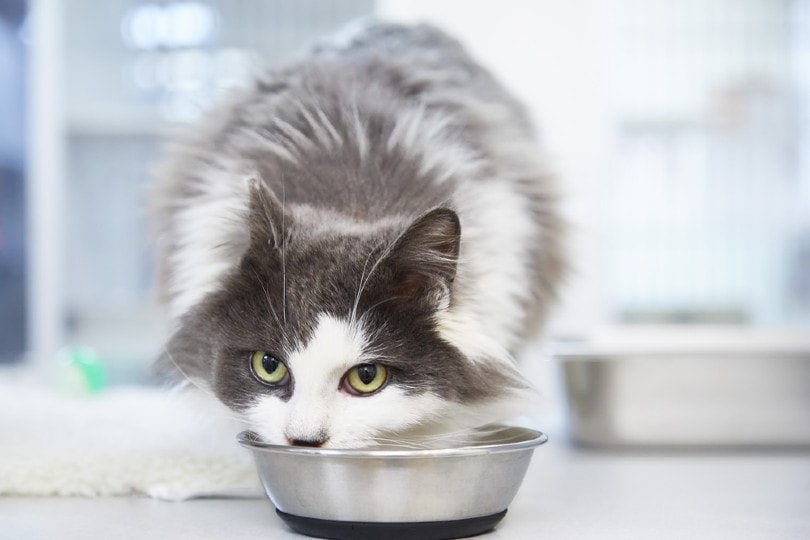

Final Thoughts
If you notice that your cat is itching excessively, take your cat to the vet immediately. If your pet is left untreated, they will quickly develop wounds on their skin, and hot spots can appear. These are extremely painful for the cat and can grow large if left untreated. Fortunately, treating hot spots is relatively easy under a vet’s care.
A hot spot typically develops because of an underlying cause that is urging your cat to lick or scratch excessively. If you provide your pet with the proper medication for the hot spot and the underlying cause, you can expect your cat to feel better in no time.
While your cat is undergoing treatment for hot spots, be cautious around the area. Even felines that are normally docile and friendly may claw or bite you if you touch the painful hot spot. So, remember to be careful around your pet during their recovery period.
- See also: Cat Skin Cancer
Featured Image Credit: Drnooker, Shutterstock
Contents
- What Are Hot Spots?
- The 3 Stages of Acute Moist Dermatitis
- 1. First Stage: Red, Inflamed, and Moist
- 2. Second Stage: Red, Inflamed, and Moist with Oozing Pus
- 3. Third Stage: Red, Inflamed, and Moist with Oozing Pus and Dry Pus
- Causes of Hot Spots in Cats
- How to Treat Hot Spots on Cats
- The 3 Prevention Tips
- Final Thoughts
